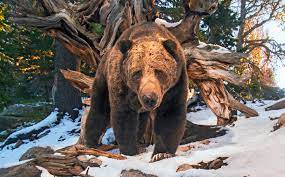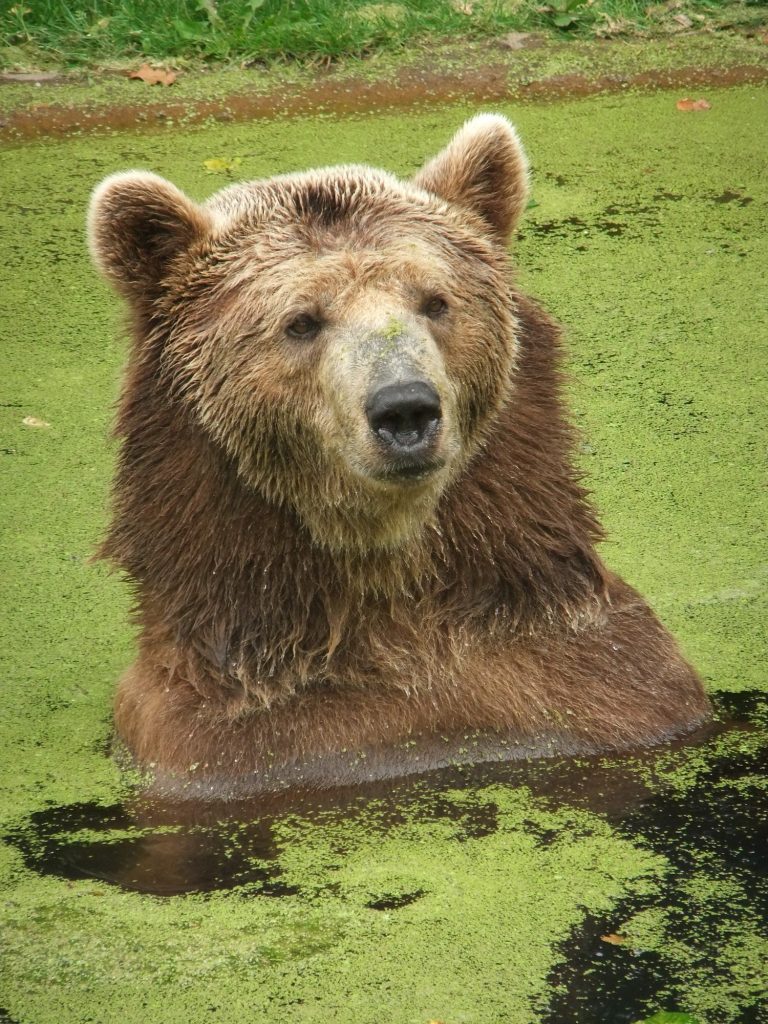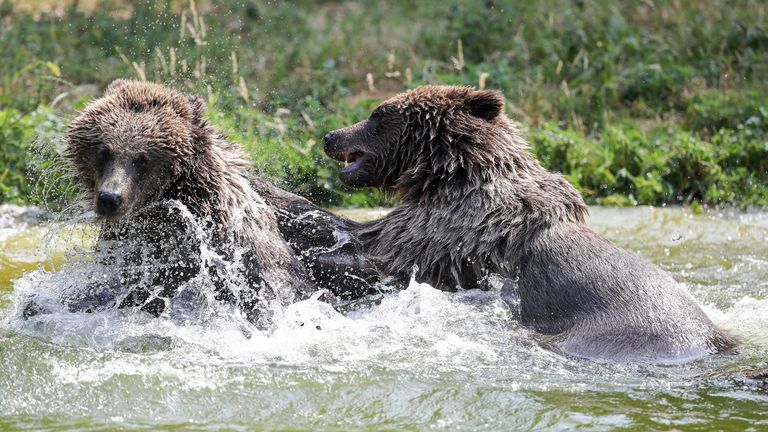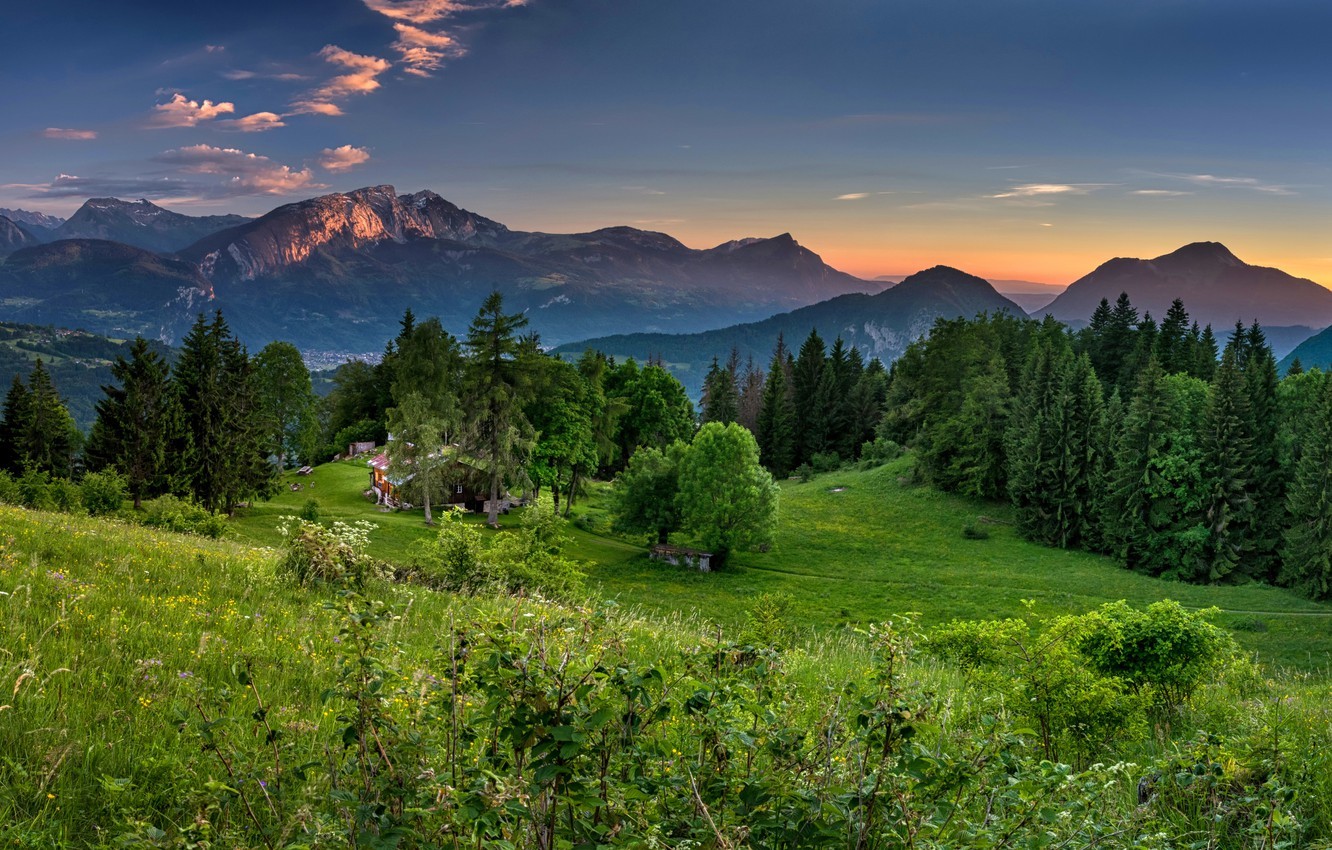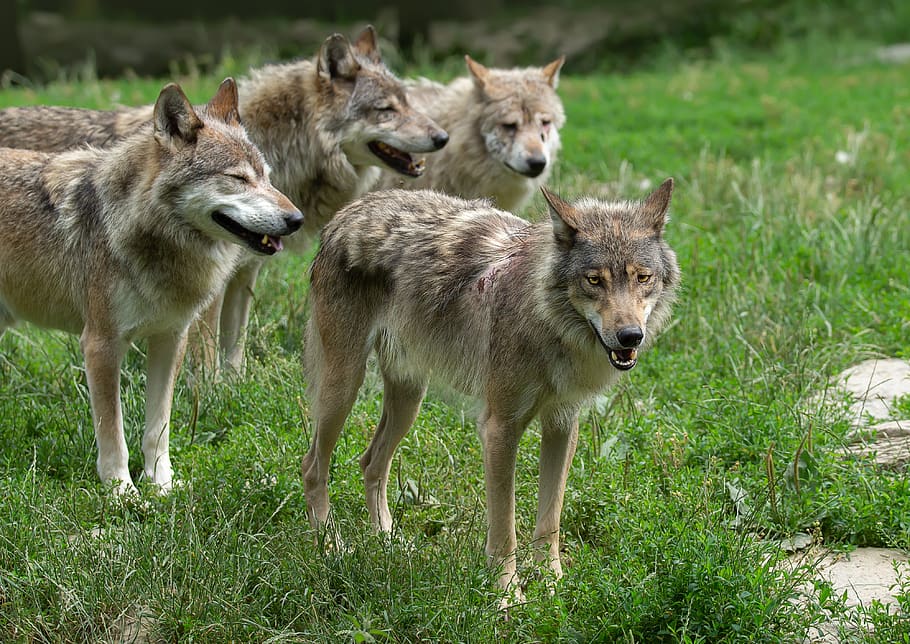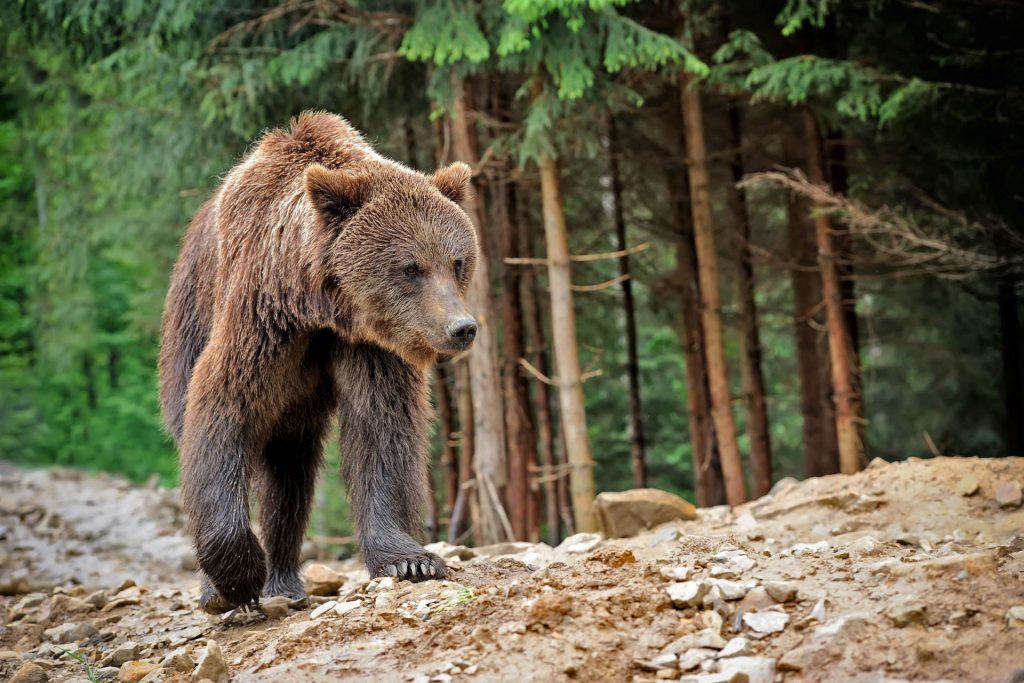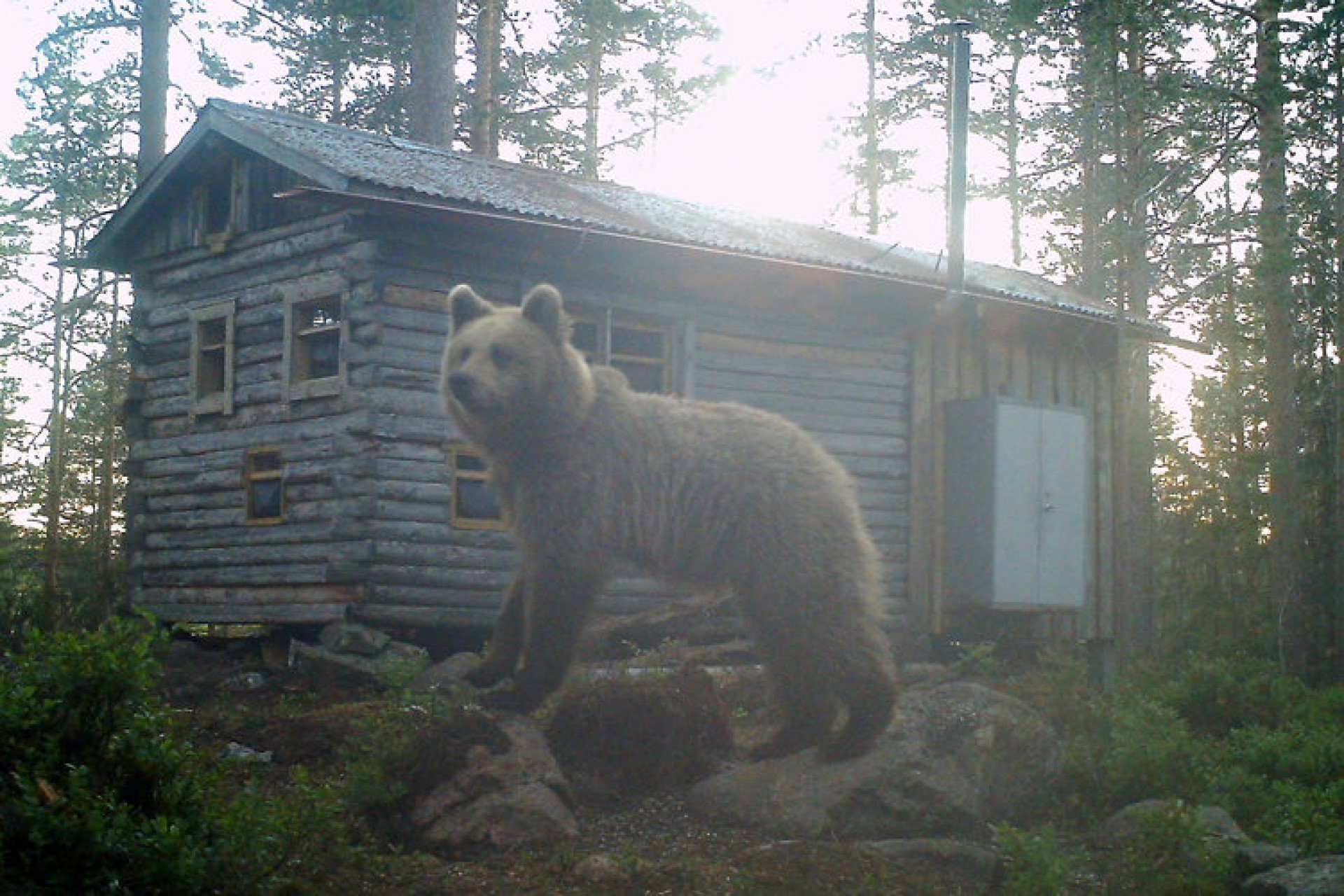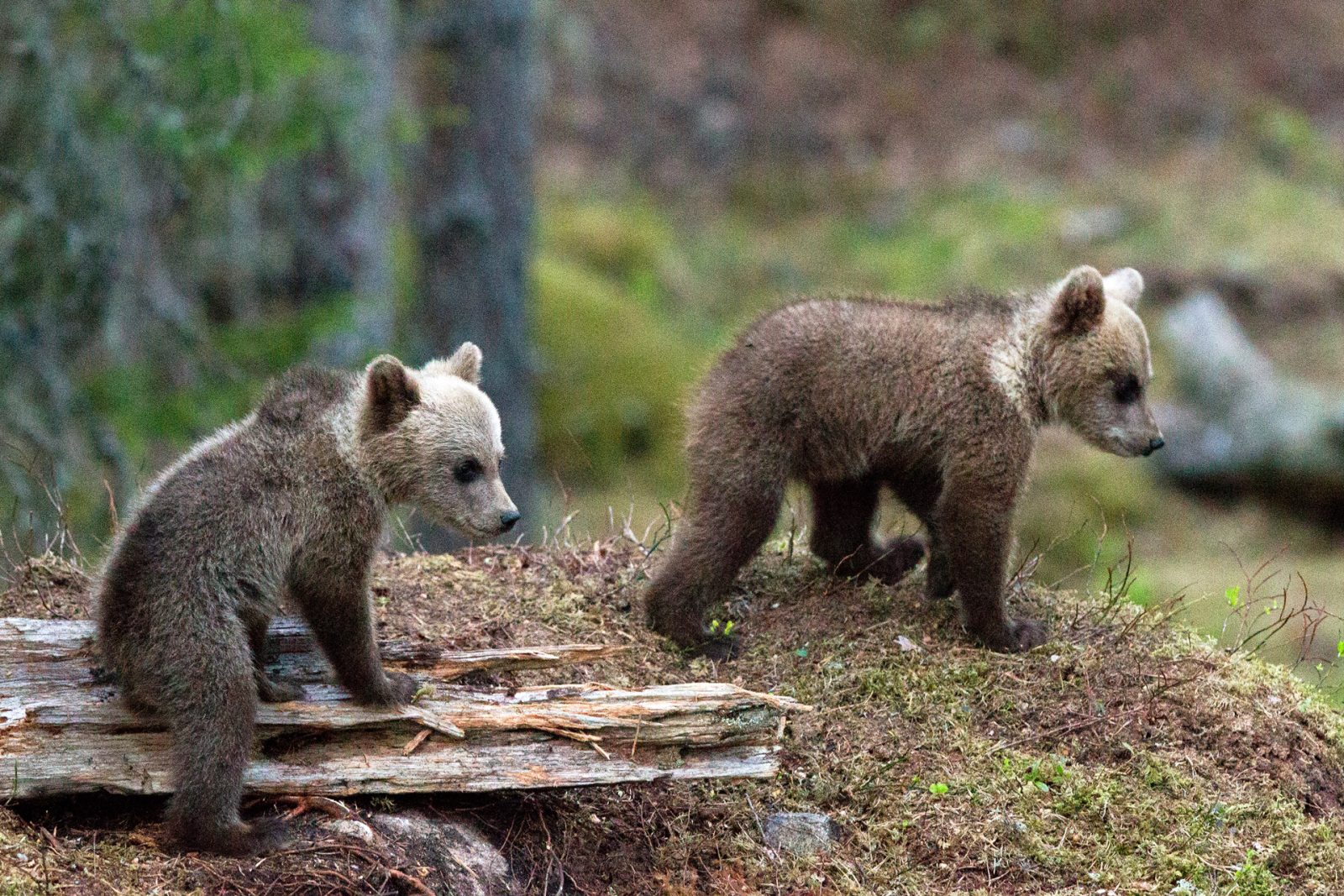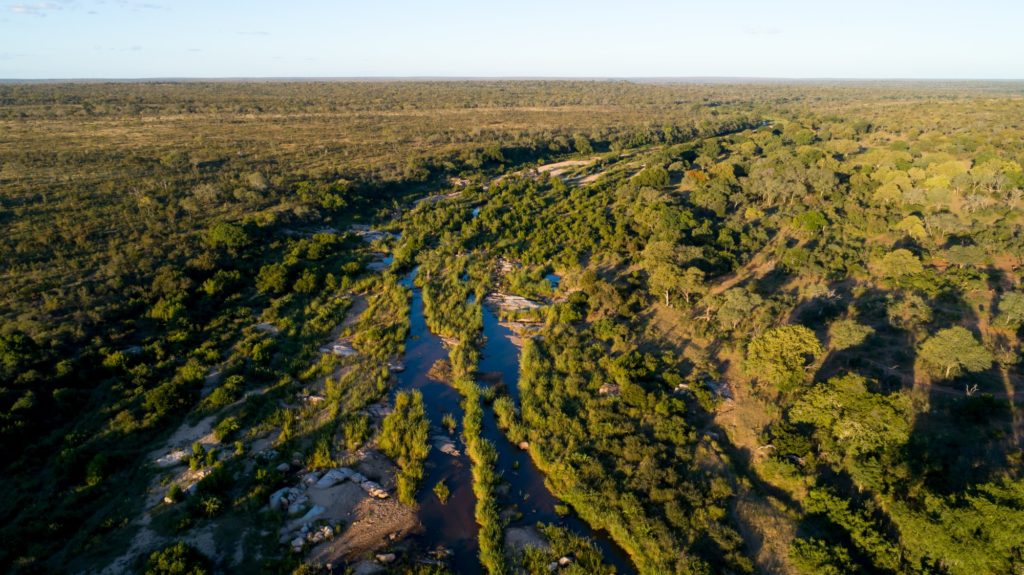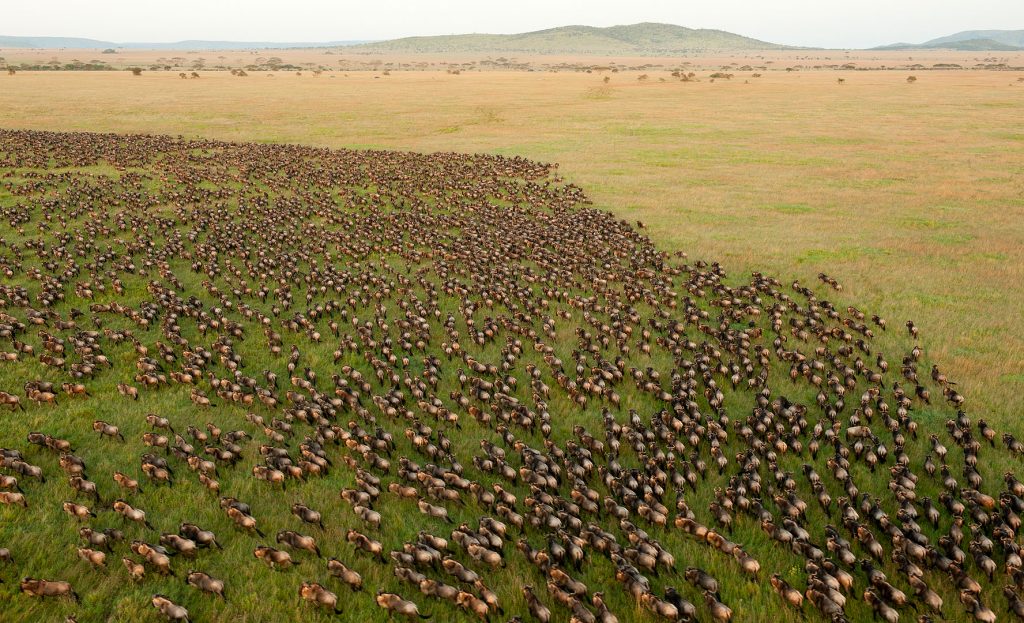Most scavengers are relatively small. Animals like jackals are unable to make large kills. Furthermore, the amount left behind by lion and leopard is usually more than enough for a jackal to survive on.
In the northern hemisphere though, bears get a great deal of their calories from scavenging. They have an incredibly keen sense of smell, allowing them to find dead animals,
However unlike the jackal, they are very capable of hunting. They can be seen from time to time, mixing the two.
Bears, particularly Grizzly bears, are very strong. In peak health, a large bear is more than capable of taking on a pack of wolves. They also require huge quantities of calories, and before going into hibernation, this will often push them to take bigger and bigger risks.
This is not hugely rare behaviour, but it is far rarer that it be filmed.

